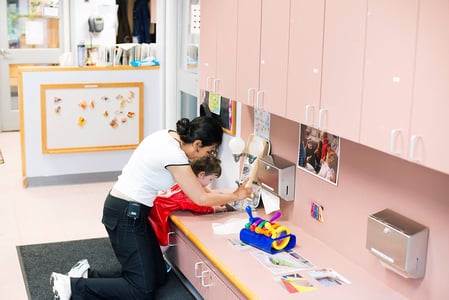
“I survived.”
These were the only two words in an email from a former student who had just finished her first day of teaching. While not every teacher may say those exact words, it’s not an uncommon sentiment. Many teachers, both new and veteran, struggle with behavior management. While there are all sorts of pre-packaged programs you can purchase or apps you can install on your phone, I’m going to suggest that there are some pretty simple, sure fire ways to help kids learn the rules—no assembly required.
Don't Overload Them With Rules
Let’s start with rules. Rules should be short, simple, and easy to monitor. The younger the kids, the fewer the rules. Remember that old adage that children should invite only as many kids to their birthday party as they are years old? Same basic idea. Too many rules are confusing for children and hard for staff to monitor. Show me a classroom with a lot of rules and I’ll show you a teaching staff that spends way too much time enforcing those rules—often at the expense of missing out on teachable moments.
Communication is Key
Once you have your rules, be sure to communicate them frequently, especially in the beginning of the year, as new children join the class, or after a long break from school. When children arrive in the morning, remind them of the arrival routine (younger children may benefit from a picture schedule). Review the rules during morning group and share your expectations before kids start an activity. Be consistent and make sure that everyone else on your team is consistent as well. If children are expected to raise their hands in order to talk, but sometimes they’re allowed to call out, the children won’t be clear about the rules. Ralph Waldo Emerson said, “A foolish consistency is the hobgoblin of little minds,” but I’m pretty sure he wasn’t teaching children!
Frame rules by stating what you want to children to do, not what you don’t want them to do. How many times do we tell children to “act right” or say “that’s not the correct way to behave?” I don’t know about you, but I don’t know what it means to act right, but I do know what it means to share my toys and use my inside voice.
Model the Behavior You Want to See
A little bit of reinforcement can go a long way. Catch them being good and be specific in your praise. A heartfelt, “I see you’re cleaning up your center” will go a lot further and have more meaning than the generic “good job.” I believe in praising children, especially when they are learning new routines and skills. But if we keep saying good job over and over again, our words become part of the background noise in the classroom. I sometimes call it auditory wallpaper.
Finally, when someone acts up, don’t overreact. Yes, I know I just told you what not to do, but you’re adults; I think you can handle it. We should expect children to act up. They’re kids and they like to test the waters. When this happens, stay calm and redirect. Putting your fingers to your lips to signal quiet is a great strategy. Gently restating the expectations works well, as does getting in close physical proximity. Do you know what’s not a good strategy? Freaking out, stomping your feet, and yelling. So, do what we teach children to do: step back, take a deep breath, and count to 5. When you remain calm and redirect you’re modeling for the children, you're showing them how to react to stressful situations and you’re helping to keep your classroom running smoothly.
If you have questions or want to hear more about this topic, just let me know. Always happy to help. And have a great start to your school year!

